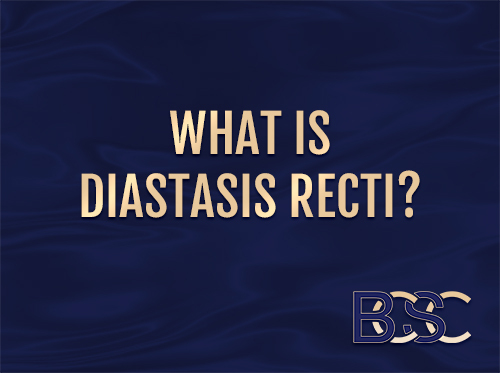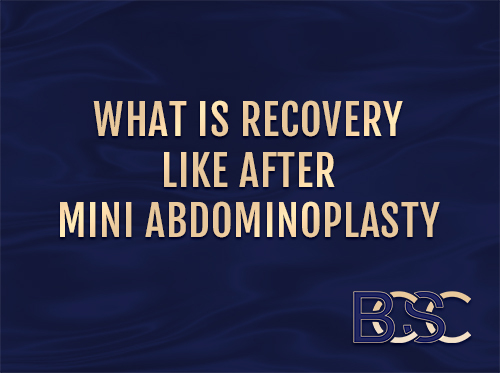Abdominoplasty (Tummy Tuck) After a C-Section
The journey through pregnancy and childbirth can bring profound changes to a woman’s body. For those who have delivered by caesarean section (C-section), it is common to notice ongoing abdominal concerns such as excess skin, weakened muscles, and visible scarring. Many women begin to explore whether an abdominoplasty (tummy tuck) may be an option after their recovery from childbirth.
It is important to understand the differences between these two operations, the reasons why timing is critical, and what options are available.
C-Section vs Abdominoplasty – Two Different Operations
A caesarean section is performed to deliver a baby when vaginal birth is not possible or safe. It involves an incision through the lower abdomen and uterus. After delivery of the baby and placenta, the incisions are carefully closed with sutures or surgical glue. While safe, a C-section is major surgery and carries both short- and long-term considerations for recovery.
An abdominoplasty, by contrast, is an elective procedure that aims to remove excess abdominal skin and fat while also repairing weakened or separated abdominal muscles (known medically as diastasis recti). The operation can also address issues such as hernias, abdominal wall weakness, or functional concerns like back discomfort related to poor core support. Unlike a C-section scar, which is typically shorter, the incision for an abdominoplasty is longer and varies depending on the type of tummy tuck performed.
Why Wait Before Considering Abdominoplasty?
It is generally recommended to wait at least 12 months after a C-section before undergoing abdominoplasty. This waiting period is important for several reasons.
Firstly, it gives the body time to heal fully. Pregnancy and surgery place significant demands on the body. Tissues, muscles and skin need time to settle, and hormone levels gradually return to pre-pregnancy ranges. Attempting an abdominoplasty too early may prolong recovery and increase complication risks.
Secondly, waiting allows for stable weight. Many women continue to lose pregnancy weight in the months after birth. Undertaking surgery before weight stabilises may compromise the outcome and increase the chance of revision surgery in the future.
There are also practical considerations. Abdominoplasty recovery limits lifting and physical activity. Waiting until your child is older makes caring for them easier during your own recovery. In addition, certain anaesthetic medications used in surgery may interfere with breastfeeding, so delaying ensures this is no longer a concern.
Finally, women who are planning further pregnancies are advised to wait until they have completed their family. Subsequent pregnancies may reverse the benefits of the operation.
For clarity, the main reasons to wait include:
- Allowing the body time to heal from both pregnancy and C-section surgery
- Hormonal stabilisation and tissue recovery
- Achieving a stable post-pregnancy weight
- Easier mother–child bonding and practical recovery
- Avoiding interference with breastfeeding
- Preserving results if future pregnancies are planned
Abdominoplasty Options After a C-Section
If abdominoplasty is being considered after recovery from a C-section, the type of operation depends on the degree of skin laxity, fat distribution, and muscle involvement.
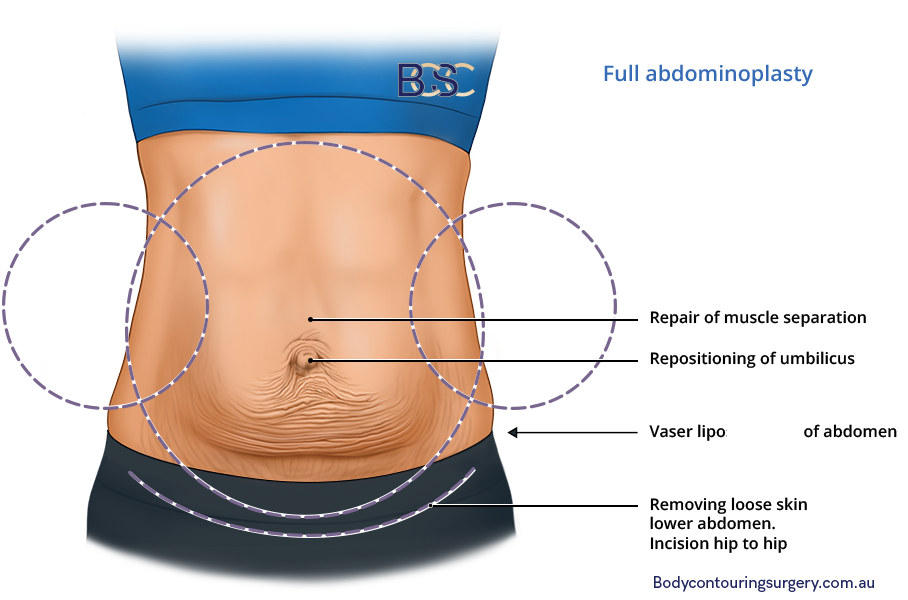
A full abdominoplasty removes excess skin and fat from both the upper and lower abdomen. It also allows repair of muscle separation (diastasis recti) and often requires repositioning the navel. The incision runs from hip to hip but is usually placed low enough to be hidden beneath underwear or swimwear.
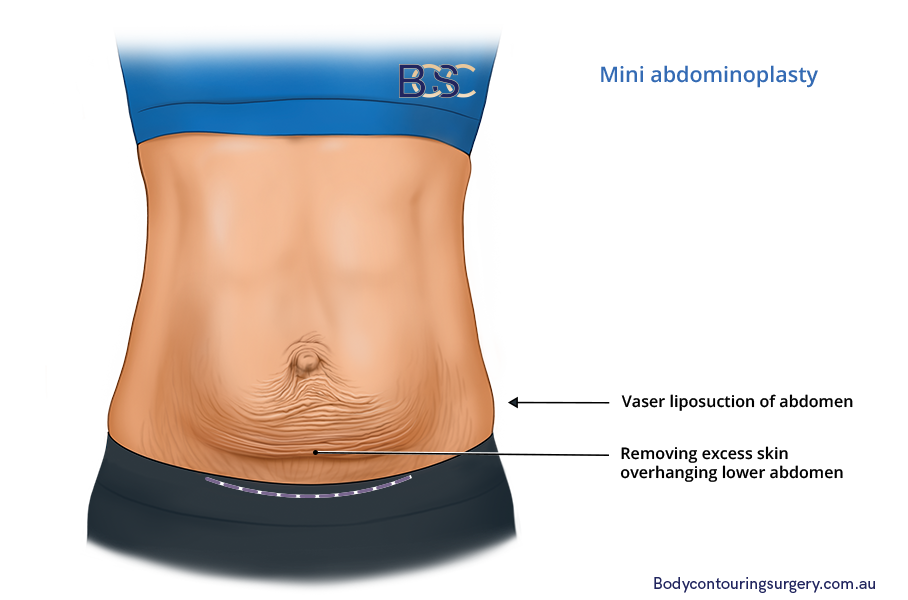
A mini abdominoplasty is less extensive. It addresses loose skin and fat limited to the lower abdomen and typically does not require repositioning the belly button. Recovery is somewhat shorter, though it is only suitable for women with relatively minor abdominal changes.
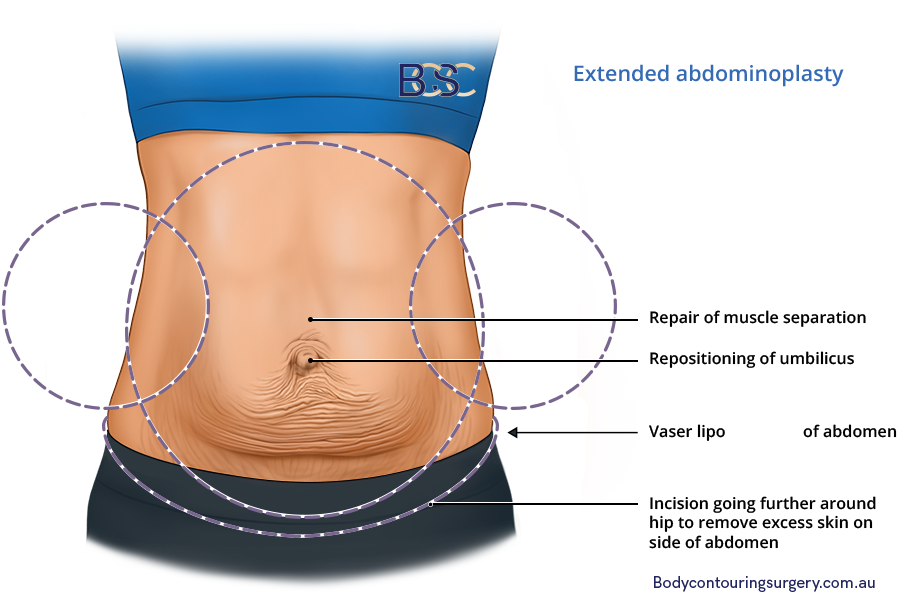
An extended abdominoplasty addresses the abdomen, flanks, and sometimes part of the back. It is suited to those with more significant changes after multiple pregnancies or major weight loss. The incision is longer, but the procedure allows for a more comprehensive removal of excess skin.
Benefits of Abdominoplasty After C-Section
An abdominoplasty performed after C-section recovery may offer both functional and aesthetic benefits. These include:
- Improving the appearance of a C-section scar
- Removing excess abdominal skin that developed after pregnancy
- Repairing separated abdominal muscles (diastasis recti), which may help restore core strength
- Improving posture and, in some cases, reducing back discomfort
- Enhancing the shape of the navel if stretched or distorted during pregnancy
- Reducing abdominal stretch marks, particularly those located on skin that is removed during surgery
Not every stretch mark or scar can be eliminated, but carefully planned surgery can improve the abdominal profile and address some of the physical changes that remain after pregnancy.
Should a C-Section and Abdominoplasty Be Combined?
Some women ask whether a C-section and abdominoplasty can be combined into a single procedure, sometimes referred to as a “C-tuck.” While technically possible, research has shown that combining these two major surgeries significantly increases the risk of complications such as wound infection, wound breakdown, seroma (fluid collection), haematoma (bleeding under the skin), and blood clots (thrombosis).
Studies report complication rates between 20–40% when the two are performed together, compared with much lower rates when abdominoplasty is carried out as a separate procedure after recovery. For this reason, combining the two operations is generally discouraged. Separating them allows safer recovery and more predictable results.
Conclusion
For women who have delivered by C-section, an abdominoplasty may be an option once healing is complete and weight has stabilised. The procedure can address loose skin, excess fat, and abdominal muscle separation (diastasis recti). However, waiting at least 12 months after childbirth is strongly advised to ensure safety, improve recovery, and achieve the best outcome.
While some women consider combining the two surgeries, evidence shows that this approach carries much higher risks and is not recommended. Discussing your situation with a qualified specialist surgeon will help you decide on the safest and most suitable timing.
References
- Benn, T. E., & Spera, C. E. (2014). Abdominoplasty Combined with Cesarean Section: Discussion of the Evidence. The American Journal of Cosmetic Surgery.
- Berghella, V., Baxter, J. K., & Chauhan, S. P. (2005). Evidence-based surgery for cesarean delivery. American Journal of Obstetrics and Gynecology, 193(5), 1607–1617.
- Iribarren-Moreno, R., Cuenca-Pardo, J., & Ramos-Gallardo, G. (2019). Is Plastic Surgery Combined with Obstetrical Procedures Safe? Aesthetic Plastic Surgery, 43(5), 1396–1399.
- Ali, A., & Essam, A. (2010). Abdominoplasty Combined with Cesarean Delivery: Evaluation of the Practice. Aesthetic Plastic Surgery, 35(1), 80–86.
- Bhargava, D. (2008). Abdominoplasty today. Indian Journal of Plastic Surgery : Official Publication of the Association of Plastic Surgeons of India, 41(Suppl), S20.
- Cormenzana, P. (2010). Revision abdominoplasty and proper umbilical positioning. Clinics in Plastic Surgery, 37(3), 541–546.
- Sandall, J., Tribe, R. M., Avery, L., Mola, G., Visser, G. H., Homer, C., Gibbons, D., Kelly, N., Kennedy, H. P., Kidanto, H., Taylor, P. D., & Temmerman, M. (2018). Short-term and long-term effects of caesarean section on the health of women and children. The Lancet, 392(10155), 1349–1357.
- Ali, A., Essam, A. Abdominoplasty Combined with Cesarean Delivery: Evaluation of the Practice. Aesth Plast Surg 35, 80–86 (2011).
- Coldron Y, Stokes MJ, Newham DJ, Cook K (2008) Postpartum characteristics of rectus abdominis on ultrasound imaging. Man Therapy 13(2):112–121
- Iribarren-Moreno, R., Cuenca-Pardo, J., & Ramos-Gallardo, G. (2019b). Is Plastic Surgery Combined with Obstetrical Procedures Safe? Aesthetic Plastic Surgery, 43(5), 1396–1399.
- Karunaratne, Y. G., Romeo, P. B., Willis, M., & Sanki, A. (2023). The Safety and Effects of Pregnancy after Abdominoplasty: A Systematic Review of the Literature. Aesthetic Plastic Surgery, 47(4), 1472–1479.
